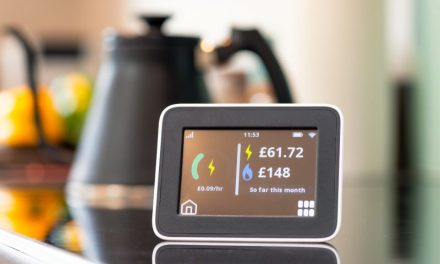by Ron Beck, Senior Director, AspenTech
The energy accessibility and affordability challenge is becoming ever more urgent around the world. UN projections now state that the world population will hit 9.7 billion in 2050, up from 7.8 billion. Alongside this, the global middle-class is now making up almost half of the world’s population (48%), or 3.8 billion people, and continues to grow in number. It’s a reminder to the energy industry that the collective economic power of these individuals is expanding, placing strain on power demand.
The corresponding need for resources by this demographic is likely to be responsible for the 50% increase in global energy demand by 2050, and 75% increase in electricity demand, as predicted by the U.S. Energy Information Administration (EIA). Key to meeting this requirement is the ramping up of electricity resources, particularly from renewable origins. However, to enable suitable electrical generation, an estimated investment of over $1 trillion a year in capacity, grid improvements, low carbon generating capacity, transmission and decentralised distribution will be needed. Energy companies will also need to take into account that approximately 770 million people cannot access affordable electricity currently (IEA, 2022).
The promise of electrical power
The move towards electrification is an opportunistic one for organisations across sectors including chemicals, mining, conventional and green energy, plus power generation and distribution. However, there are challenges standing in the way. Grids must be not only expanded, but modernised, enabled to rapidly evolve to support distributed (renewable) power and power storage, and more resilient in the face of cyber threats. More organisations are now decarbonising assets to achieve carbon abatement pledges and utilising electrification as part of that strategy. Microgrids are enabling control of critical power needs to ensure vital assets do not suffer sudden shutdowns.
Around the world, there a numerous initiatives being implemented to assure traceability and auditability so that industry can track green power content through their value chain and understand the impact on carbon intensity of products.
This is particularly crucial to gaining more access to capital for decarbonisation investment in economically developing regions and auditing results. Investments in renewables and intelligent grids go hand-in-hand with carbon trading, to monetise decarbonisation efforts. Digital solutions supporting those distributed generation sources and grids play a crucial role in accurately tracing carbon emissions from renewable source to industrial end use, to calculation and tracking of carbon intensity of finished products produced via renewable energy, and issuing of green certificates.
Achieving a resilient, optimised and distributed grid
Organisations with their finger on the pulse are already exploring renewable solutions, such as energy storage technology, direct air carbon capture, wind and solar farm optimisation, hydrogen fuel cells and distributed generation and distribution. With the proliferation of distributed renewable power sources, grids need to be more digitally enabled, to dynamically manage the variability of both supply and demand, and ensure 100% availability as grids begin operating increasingly in a bidirectional mode. The primary objective is to ensure complete network reliability.
It’s crucial that the data being incorporated in both generation and storage solutions should be part of an intelligent to predict load and demand and route power efficiently. Also, digital upgrades are essential to support new pricing and revenue models for electricity, to encourage price-based use during periods of surplus supply and to remove current barriers to expansion of distributed generation and storage nodes and to enhance cybersecurity. Further, both for transmission and distribution networks, the ability to forecast weather-based peaks and valleys in renewable power supply will help to optimise utilisation of the renewable capacity, avoid overloading lines, as well as effectively using storage (battery array) capabilities.
Other benefits can also be gained from utilising advanced distribution management solutions.
They will provide reconfigurable capacity, visibility into distributed generation, resiliency amid increasingly dynamic supply and demand, advanced situational awareness for operators and managers, and enhanced grid support for smarter meters, generators and storage nodes. However, to maximise value from distributed power a reality, developments in digital software will be required. For example, enhanced transparency into systems will better enable distribution to monetise their operations, while also helping them to better maintain, price and optimise distributed power and storage. Connection of smart home and commercial devices will help incentivise consumers to preferentially use available power during surplus, low price, periods.
Power generation gaps are also being filled by the rapid growth and uptake of microgrids. The right digital solution enables optimised development of microgrids, integrated with regional grids and developed in a more cohesive, intelligent way. This approach promotes and enables entrepreneurial investment and innovation in new power generation strategies and connected storage innovation. Microgrids give local concentrations of power users to maximise their reliability.

Accessing the opportunities moving forward
Without doubt, the global march to net zero carbon emissions is gathering pace, with more countries committing to stringent targets and objectives. It’s providing a bright future for electrification and offering new opportunities to organisations in the energy sector. Across multiple industrial sectors, organisations have a chance to carve out a competitive edge and achieve true market differentiation.
As an example, power and utilities can harness the move towards electrification by investing more in generation and transmission assets, while others can bring in new equipment and processes to achieve greater efficiencies. Among all this is the ability to bring down operating costs as expensive fossil fuels make way for electricity. With more resilient and stronger grids being deployed, developing regions are able to sidestep traditional approaches to power and take on full-scale adoption of renewable power for cheaper, wide-scale access to energy.
To tap into the electrification opportunity, digital software provides the foundation for wide-scale adoption of electricity as a power source, while giving choice in terms of technologies deployed to enable regional and microgrids on a global scale.




